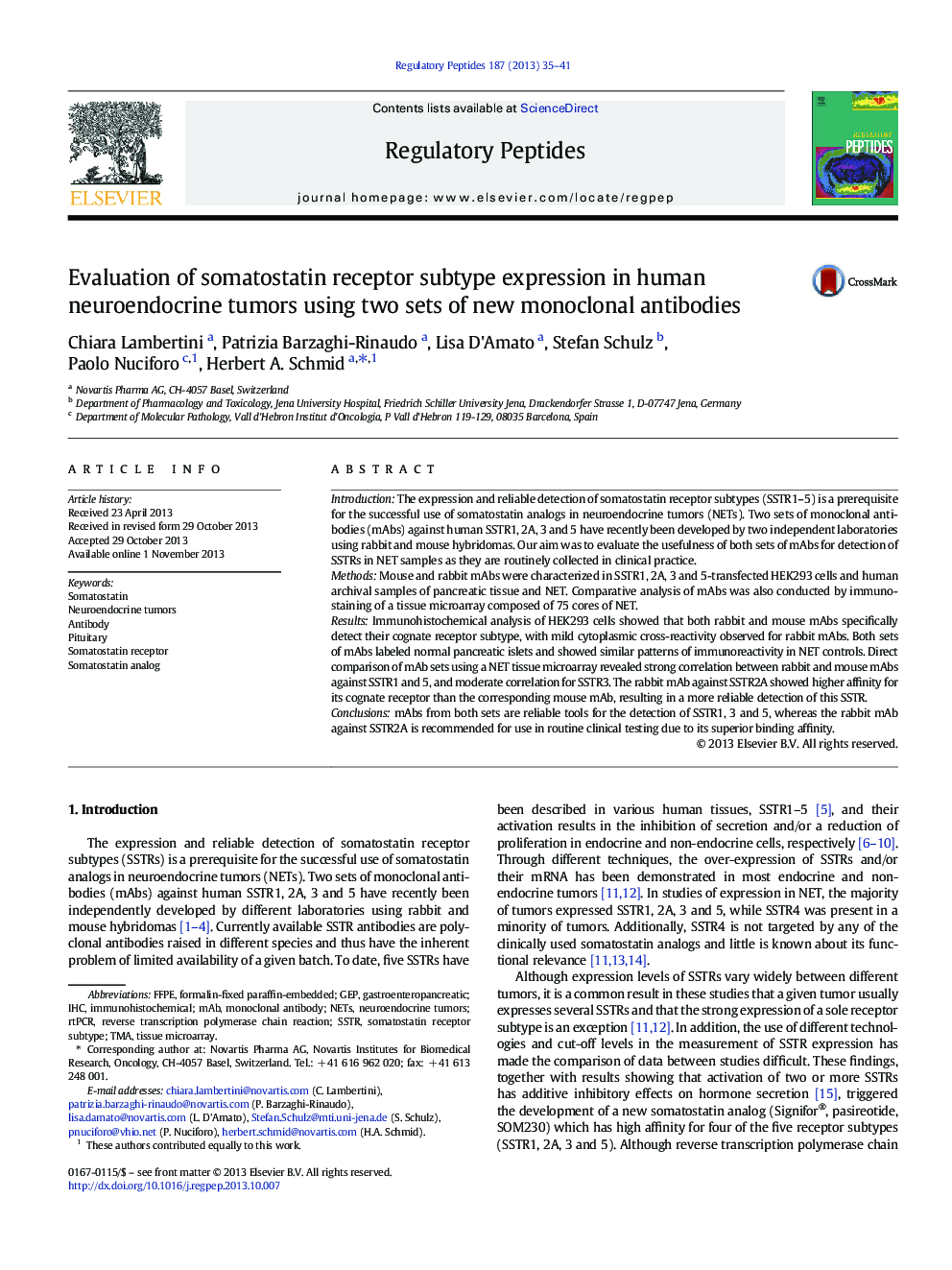| Article ID | Journal | Published Year | Pages | File Type |
|---|---|---|---|---|
| 2022458 | Regulatory Peptides | 2013 | 7 Pages |
•Two sets of mAbs were previously developed to human SSTR1, 2A, 3 and 5.•Each mAb specifically detected its cognate SSTR in HEK293 cells.•Each mAb stained human archival samples of normal pancreatic tissue and NET.•Moderate/strong correlation observed between sets of mAbs for SSTR1, 3 and 5 in NET.•Both mAb sets are reliable tools for detecting SSTRs during routine clinical tests.
IntroductionThe expression and reliable detection of somatostatin receptor subtypes (SSTR1–5) is a prerequisite for the successful use of somatostatin analogs in neuroendocrine tumors (NETs). Two sets of monoclonal antibodies (mAbs) against human SSTR1, 2A, 3 and 5 have recently been developed by two independent laboratories using rabbit and mouse hybridomas. Our aim was to evaluate the usefulness of both sets of mAbs for detection of SSTRs in NET samples as they are routinely collected in clinical practice.MethodsMouse and rabbit mAbs were characterized in SSTR1, 2A, 3 and 5-transfected HEK293 cells and human archival samples of pancreatic tissue and NET. Comparative analysis of mAbs was also conducted by immunostaining of a tissue microarray composed of 75 cores of NET.ResultsImmunohistochemical analysis of HEK293 cells showed that both rabbit and mouse mAbs specifically detect their cognate receptor subtype, with mild cytoplasmic cross-reactivity observed for rabbit mAbs. Both sets of mAbs labeled normal pancreatic islets and showed similar patterns of immunoreactivity in NET controls. Direct comparison of mAb sets using a NET tissue microarray revealed strong correlation between rabbit and mouse mAbs against SSTR1 and 5, and moderate correlation for SSTR3. The rabbit mAb against SSTR2A showed higher affinity for its cognate receptor than the corresponding mouse mAb, resulting in a more reliable detection of this SSTR.ConclusionsmAbs from both sets are reliable tools for the detection of SSTR1, 3 and 5, whereas the rabbit mAb against SSTR2A is recommended for use in routine clinical testing due to its superior binding affinity.
